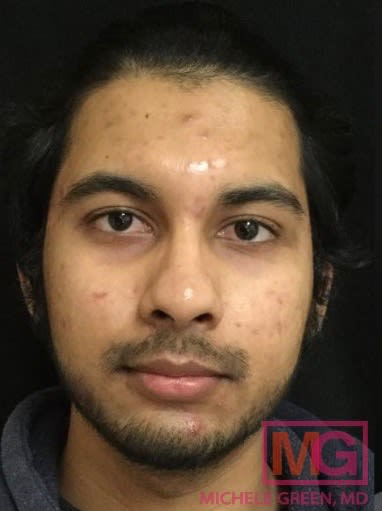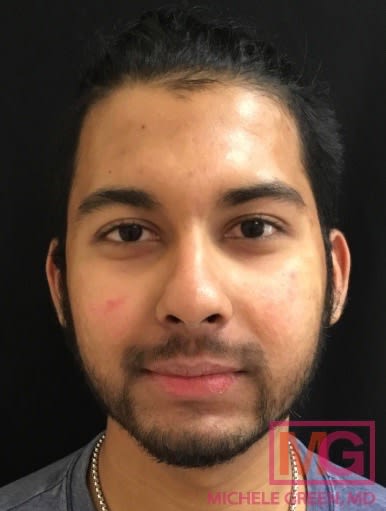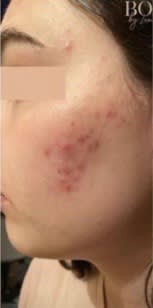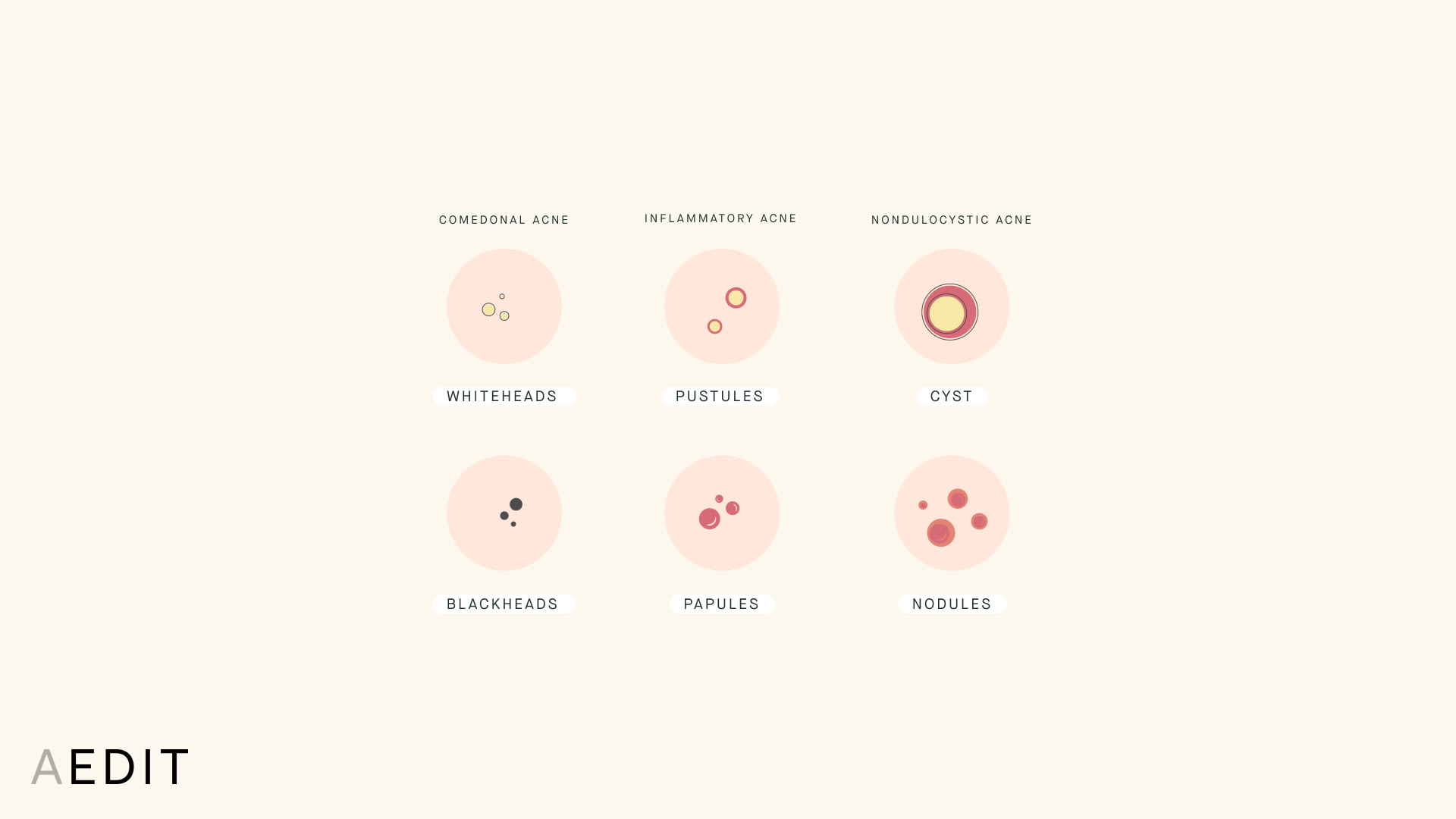
The Skinny
When it comes to treating acne, there is no such thing as one size fits all. Depending on the type, size, and severity of a breakout, patients may require any combination of professional and at-home remedies to clear the skin (check out our complete guide to Acne Concerns). From in-office and topic treatments to diet and lifestyle modifications, acne solutions are as diverse as the individuals experiencing the breakouts.
AEDIT
Before & After Images by Provider


_FSyHJDtANx.jpg)






Before & After Images by Provider
Acne Solutions
The Specifics
Who needs treatment for acne?
Acne vulgaris (a.k.a. acne) is the most common skin condition in the United States, and it is not just a teenage concern. Adults into their forties may also experience a case of adult acne ranging from a few bumps to widespread clusters of blemished skin on both the face and body.
There are two main categories of acne, inflammatory and non-inflammatory, which can present with varying degrees of severity. The lesions occur after a pore becomes clogged with oil, dead skin cells, and/or p. acnes bacteria.
Types of Acne

Within those general classifications exists more specific types of acne lesions. Individuals may experience any number of these specific types. On the non-inflammatory side, open comedones (i.e. blackheads) form when a clogged pore remains open, resulting in a dark spot on the surface of the skin. Conversely, closed comedones (whiteheads) appear when a pore closes on top of a buildup of sebum and dead skin cells resulting in a small bump. Patients with non-inflammatory acne experience little to no pain or redness, although if untreated comedones can become inflamed leading to inflammatory acne lesions.
Inflammatory acne tends to be more severe and comes in the form of papules, pustules, nodules, and cystic acne. Papules and pustules are red and may or may not be pus filled. They are commonly known as pimples. When acne lesions become rooted deeply below the surface of the skin they are classified as cysts and nodules. These painful and swollen lesions are notorious for chasing scarring.
Individuals who have had acne breakouts for several months or years should consult a board-certified dermatologist regarding treatments that will target their specific type of acne. According to the American Academy of Dermatology (AAD), people who suffer from acne may not think that it is important to get diagnosed for their condition, but untreated or improperly treated acne can lead to the development of acne scars, which have long-term effects on skin clarity, tone, and texture.
What can you expect from acne treatment?
Just as no two breakouts are the same, there is no universal treatment program for acne. While some patients may be able to clear their skin with over-the-counter products containing antibacterial ingredients like benzoyl peroxide or salicylic acid, more severe acne cases may require prescription medications like isotretinoin (Accutane) or spironolactone.
An important note when treating everything from the casual whitehead to the cystic breakout is the benefit of diligent and persistent treatment. While pimples are relatively harmless, they can take days or even weeks to clear. Developing a treatment protocol with the help of a board-certified dermatologist or skincare expert can help to ensure proper acne clearance to minimize scarring and other adverse effects.
When should you seek treatment for acne?
While many over the counter skincare products can alleviate most mild to moderate forms of acne, cysts and nodules are often difficult to treat without the help of a professional. In some cases, severe skin irritation and/or damage may occur if proper treatment is not obtained in a timely manner.
Individuals dealing with chronic or severe flare-ups can manage their condition with the help of topical antibiotics like isotretinoin (Accutane) or spironolactone. These must be taken under the care of a provider. Additionally, those who have stopped having success with at-home remedies may decide it is time to seek the help of a dermatologist for topical or oral-based prescriptions.
Why should you seek treatment for acne?
There is no hard and fast rule as to when or why someone should seek treatment for acne, but when breakouts become chronic and painful, or simply begin to interfere with a patient’s day-to-day life, it may be time to consider both at-home and professional solutions that can clear skin, thwart scarring, and help prevent future breakouts.
Once you’ve decided acne treatment is for you, there are several options to consider depending on the severity and scope. While oral medications exist to treat more severe cases of acne (think: cysts and nodules), non-inflammatory (i.e. blackheads and whiteheads), and mild to moderate pimples can often be cleared with over the counter skincare products.
Cosmetic Procedures for Acne
Professional acne treatments will most likely be prescribed by a dermatologist or performed by a licensed aesthetician to help clear mild to severe cases of acne. Regardless of skin type, there are acne treatments suited to every unique case of acne.
For Comedones (Blackheads & Whiteheads)
For the less severe forms of acne, topical treatments can be safe, effective, and relatively inexpensive.
For Cysts, Nodules, Papules, and Pustules
For more severe acne penetrating deeper into the dermis, more potent treatments will be necessary.
At-Home Acne Treatments
Whether you are looking for short or long term acne relief, there are an array of at-home treatment options available for acne. In addition to incorporating skincare products formulated with acne-fighting ingredients, diet and lifestyle changes may also help to minimize acne triggers. It should be noted that patients are encouraged to consult a dermatologist or skin expert prior to starting any at-home treatments to ensure it will be safe and effective, and not interact with any treatments they are already on.
Over-the-Counter Skincare for Acne
Since the root cause of acne is clogged pores, using skincare products with antibacterial and anti-inflammatory ingredients can help to heal and prevent breakouts by cleansing and balancing the skin.
Diet and Lifestyle Modifications for Acne
Contrary to popular belief, eating greasy food and not keeping your face clean does not cause acne, but it definitely doesn’t help.
Research has shown that high-glycemic foods (i.e. white bread, candy, potato chips, etc.) lead to blood sugar spikes that cause inflammation throughout the body. Inflammation coupled with increased sebum production can lead to clogged pores and acne. Dairy is also often discussed as a possible acne trigger, and the hormones found in dairy products have been loosely correlated to causing inflammation.
While there is no definitive understanding as to why some people are prone to acne and others are not, there are certain behavioral changes that will help any individual develop clearer skin. Establishing good sleep patterns, staying hydrated, exercising (just don’t forget to wash your face after!), and using proper sun protection can all help to reduce the inflammation that leads to acne.
The Takeaway
Yes, acne is a stubborn and often frustrating skin condition for just about anyone who deals with it (think: 50 million Americans, according to the AAD). Fortunately, clearer skin is possible with the right treatment and a bit of patience. From provider-prescribed medication to at-home skincare routines, there are an array of solutions that can heal current breakouts and prevent acne in the future.






